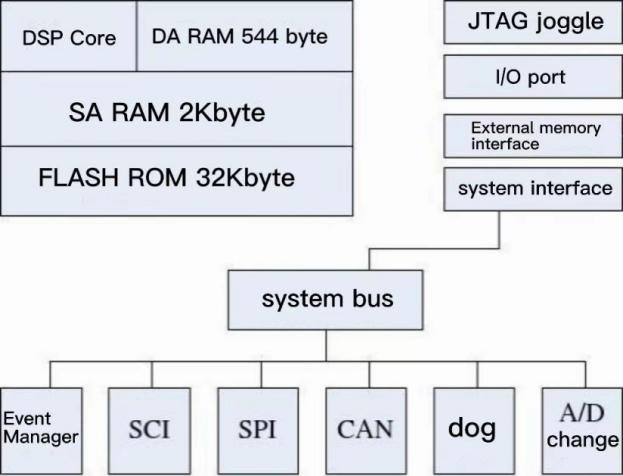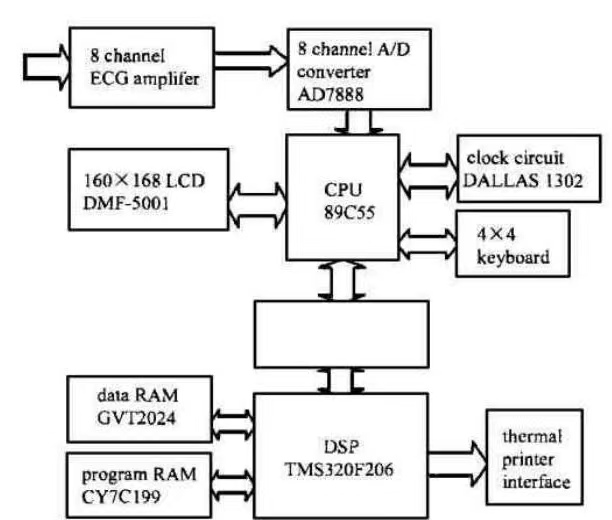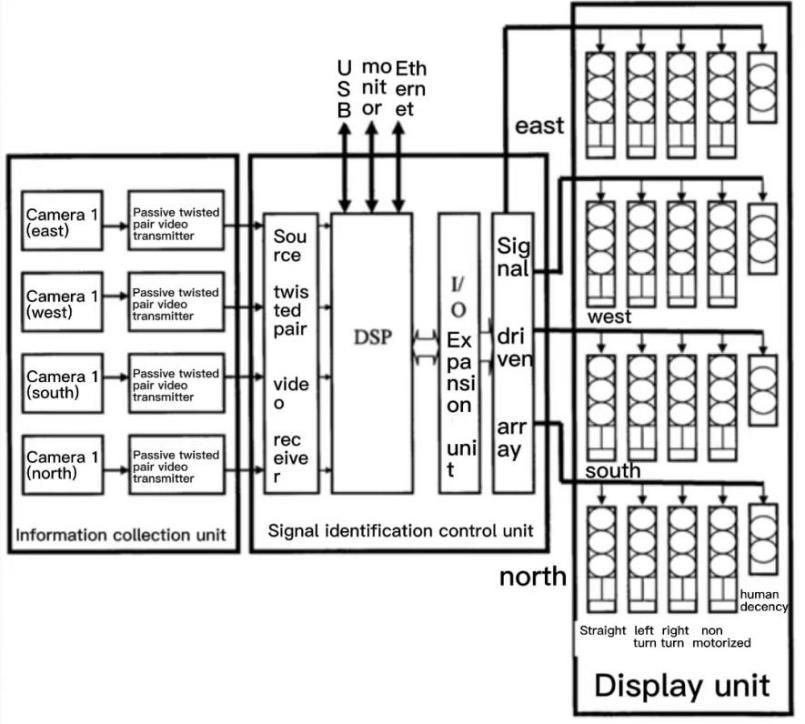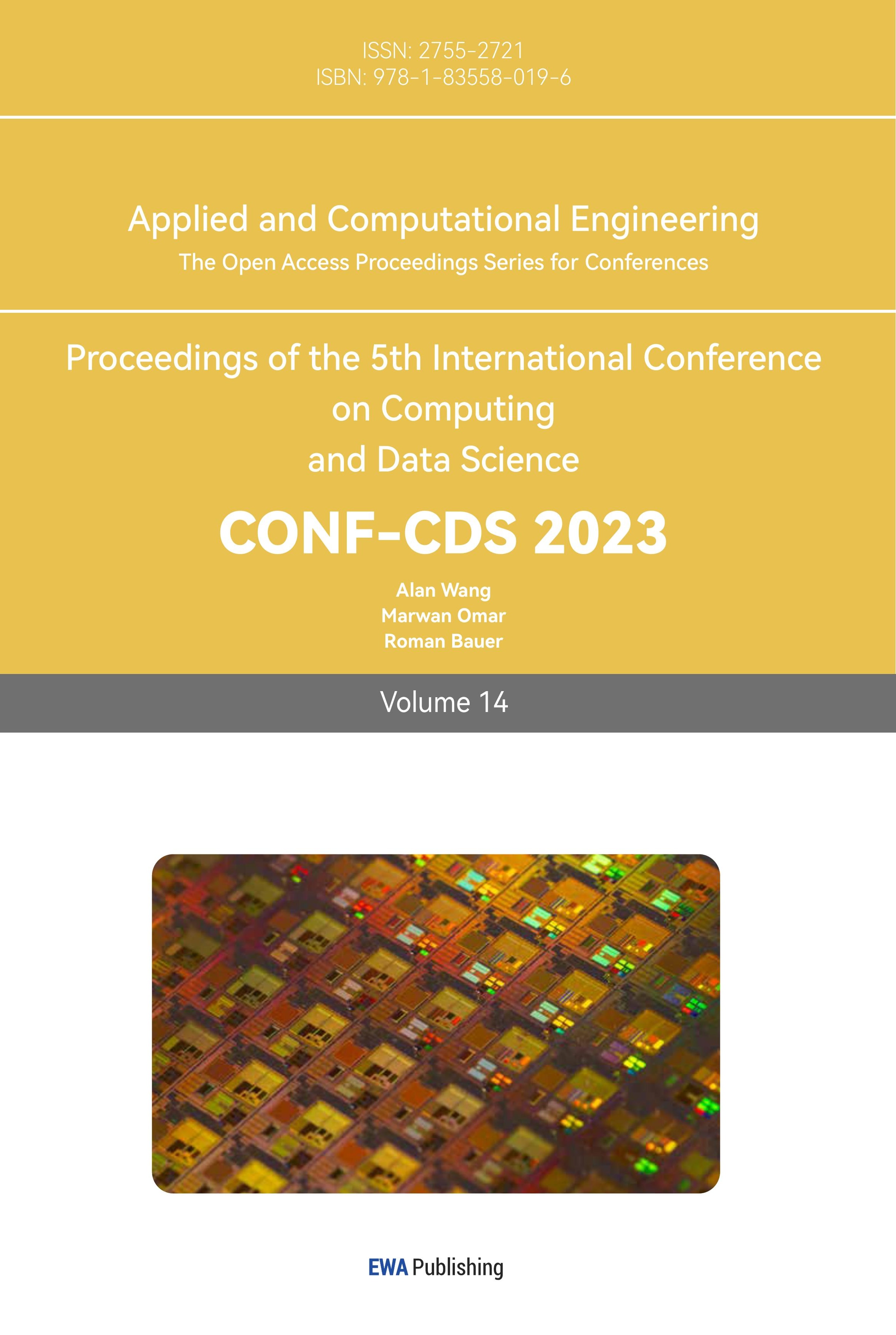1. Introduction
In the past few years, various digital signal processing methods have emerged. Digital signal processors have become the core components of many consumer, communications, medical, military and industrial products [1]. There are many digital signal processing methods that can be selected in practical applications. However, digital signal processor (DSP) has won the trust of most users for its irreplaceable advantages in processing speed, price and power consumption. With the rapid development of information home appliances, network communication and 3G mobile communication, digital signal processor, as the most critical core device, will bring people into the era of high-speed information [2].
1.1. The development history of DSP
The development of DSP can be roughly divided into three stages: theory first in the 1970s, product popularity in the 1980s, and rapid progress in the 1990s.
Before DSP appeared, digital signal processing could only rely on MPUs (microprocessors) to complete. However, the low processing speed of MPUs can not meet the requirements of high speed real-time. Therefore, it was not until the 1970s that someone came up with the theoretical and algorithmic basis of DSP. At that time, DSP only remained in textbooks. Even the developed DSP system was composed of discrete components, and its application fields were limited to military and aerospace sectors [3].
In the wake of the evolution of large-scale integrated circuit technique, the world's primary DSP slug come into the world in 1982. This kind of DSP device uses the micron process NMOS(N-Metal-Oxide-Semiconductor) technology to produce, although the power consumption and size is a little larger, but the counting rate is several tens of times faster than MPU, especially in speech synthesis and codec has been widely used. The advent of DSP chip is a milestone, it marks the DSP application system from the large system to the miniaturization of a big step forward, to the 1990s DSP technology has been used in different fields, including CCTV(China Central Television) CCTV monitoring system [4].
DSP technology has also been widely used in modern CCTV cameras. Because the characteristics of lens, spectrophotometry system and camera devices are not ideal, the signal generated by CCD(Charge coupled Device) photoelectric conversion is not only very weak, but also has many defects, such as weak image detail signal, uneven brightness, unnatural color, etc. Must go through the video signal processing amplifier to enlarge and correct the image signal, otherwise the quality of the shot image will not be high. Video processing amplifier includes: black spot correction, gain control and adjustment, automatic white balance, γ precorrection, color correction, contour correction, γ correction, stray light correction, black level control, automatic black balance, mixing blanking, white cutting, more advanced camera and automatic inflection point, chroma aperture, ultra high aperture, soft contour, black extension, black compression, super color circuit [5].
Digital signal processing camera is composed of analog processing part and digital processing part, CCD output image signal after pre-release into the analog processing part, complete black spot compensation, automatic black/white balance, stray light correction, white spot compensation, gain control, γ precorrection, etc., if these parts also use digital processing, then the signal quantization number with 13 bits, Otherwise, there will be a low number of quantized bits in the digital/analog conversion. In addition to the above parts, the latter part uses 10 bit quantization for digital processing, including color correction, contour correction, γ correction, blending and blanking, white cutting, chrominance aperture, two-dimensional filtering, data detection, coding matrix, color bar generator. The main controller is composed of microcomputer and ROM(Read Only Memory), RAM((Random Access Memory), digital/analog conversion circuit.
In addition to the signal amplification and signal correction of camera images, the digital signal processor can also better reflect the special functions of the camera. The VK-S454E camera jointly launched by discover Company and hitachi is the embodiment of DSP technology in current monitoring products [6]. VK-S454E not only has advanced signal correction, Automatic aggregation function, also in wide dynamic range (WDR), digital slow shutter (D.S.S), through the recognition of the signal color black and white conversion and can remove the infrared filter function, 3D area shielding function, these functions are from the sixth generation of Hitachi DSP digital signal processor, plus VK-S454E uses 1: 1 line scanning CCD and 23 times high performance and durable video zoom lens, so VK-S454E has the image acquisition effect in the current digital surveillance camera, and is widely used in banks, traffic, prisons, intelligent buildings, etc.
1.2. The composition of DSP system
A archetypal DSP system should include antialiasing filter. Data capture A/D translator. Digital signal handler DSP. D/A converter and low pass removal by filtration, etc [7]. The working process of DSP system: 1 The input signal x(t) through anti-aliasing filter, filter out the component higher than the folded frequency, in order to prevent aliasing of the signal spectrum. 2 After sampling and A/D converter, the filtered signal is converted into a digital signal x(n). 3 The x(n) is processed by the digital signal processor to obtain the digital signal y(n). 4 By D/A converter, y(n) is converted into analog signal; 5 by low pass filter, filter out the high frequency component, get level an smooth analog signal y(t). Anti-aliasing filter AD converter - digital signal processor DA converter low pass filter

Figure 1. The composition of DSP system.
1.3. DSP chip has the following characteristics
1.3.1. Multi-bus structure. The internal DSP chip generally uses the Harvard structure, its main feature is to store the program and data in different store away Spaces, each memory is addressed off own bat, independent access. There are corresponding data bus buffer and data bus in the chip, the program bus and data bus can allow the simultaneous acquisition of instruction words and operand, without interfering with each other. This means that instructions and operands can be prepared simultaneously in one machine cycle, thus doubling the throughput of data. Go to step further increase the speed and flexibility of operation, the DSP also uses the improved Harvard framework and Super Harvard structure.
1.3.2. Pipelined operation. Pipelining technology enables two or more different operations to be executed overlapping, thus shortening the execution time of each instruction without reducing the clock cycle and enhancing the data processing power of the processor. To execute a DSP instruction, it needs to go through several stages, such as fetch instruction, decipher instruction, fetch operand and execute instruction, and each stage is called one level pipelining. Pipeline operation of DSP means that these stages overlap in the process of program execution. At the same time of executing this instruction, the following instructions have completed the operation of fetching instruction, decoding and fetching operand in turn.
1.3.3. Special hardware multiplier. The function of hardware multiplier is to complete a multiplication operation in one instruction cycle, which is an important guarantee for DSP to realize fast operation. It can be said that almost all DSP devices have hardware multipliers inside [8].
1.3.4. Special DSP instructions. In order to process digital signals more efficiently and quickly, the digital signal processor chip specially designs a set of corresponding special instructions. These special instructions save the number of instructions, shorten the execution time of instructions, improve the speed of calculation.
1.3.5. Multi-machine parallel running characteristics. The single-machine processing capacity of DSP chip is limited, and with the continuous reduction of DSP chip price and wide application, multiple DSP chip parallel processing has become possible, you can use this feature, to achieve good high-speed real-time processing requirements.
1.3.6. Fast instruction cycle. With the continuous development, DSP chip adopts CMOS(Complementary Metal Oxide Semiconductor) technology, advanced technology and integrated circuit optimization design, the working voltage drops, making the DSP chip's main frequency constantly improved. This change will continue to improve with the continuous progress of microelectronics technology.
1.3.7. Low power consumption. With the microelectronic products in human daily life more and more proportion, DSP application field has been greatly expanded. DSP is so widely used, so reducing power consumption for power resource shortage is very important. This has also played a huge role in the development of DSP.
1.3.8. High computational accuracy. Floating point DSP provides a large dynamic range, fixed point DSP word length can also reach 32 bits, some accumulators up to 40 bits.
2. The application of DSP
Since the birth of digital signal processing technology, it should the range of applications has been out of a trend of continuous expansion, and there are many applications because of the birth of digital signal processing technology has been developed. With the continuous development of social economy, its application has become more extensive.
2.1. Multimedia field
In terms of multimedia, video data and audio data the amount of information carried is huge, and so is the storage space required. The application of DSP technology, the image, video, audio signal compression, encoding, to a certain extent save the storage space, but also improve the transmission efficiency of the communication line.
2.2. Field of automatic control
DSP technology can eliminate in-car noise and create a relatively quiet interior environment. Its main principles are: Firstly, sensors are used to collect noise in areas that are easy to produce noise, such as Windows and doors, and superposition them. At the same time, filters are used to filter out useful signals such as human voice and music. The superposed signals are sent into filters whose parameters can be changed to obtain a similar but opposite signal with the original signal, which is played out through the sound. Mixed with the noise in the car so as to offset the impact of noise [9].
2.3. The field of seabed detection
In the field of submarine exploration, the navigation of submarines can be detected information. There is a lot of noise on the seafloor, fish calls, waves, etc., which can affect seafloor reconnaissance, and it is difficult to discern useful signals even when amplified by analog circuits. The application of DSP technology can solve this problem. Since engine signals are all periodic signals, different engines give different periodic signals. The noises such as ocean waves and fish calls are mostly non-periodic signals, so the navigation information of submarines can be obtained by detecting whether periodic signals are contained and analyzing the characteristics of the contained periodic signals. By using correlation functions, the signals obtained can be processed and calculated to determine whether periodic peaks exist, and the distance and navigation information can be obtained by analyzing.
3. DSP is used in ECG acquisition and automatic analysis system
3.1. Application of DSP in ECG(electrocardiogram) acquisition system
Ecg acquisition involves the processing of a large number of signals. DSP can be used as the core processor to be responsible for synchronous data acquisition and real-time data analysis. DSP is a kind of specially optimized digital signal processing chip which can simultaneously complete one multiplication and one addition in a single cycle. The instruction processing speed of its four-stage pipeline structure is 4 times that of ordinary MCU(Micro Controller Unit). These characteristics are very conducive to the integration of digital processing algorithms such as FFT(Fast Fourier transform), filtering and convolution to reduce the burden of computer data processing.
The transmission speed between the on-chip memory and the serial communication buffer is facilitated by the standard JTAG(Joint Test Action Group) interface for external download of the program and debugging of the processing speed of 100MIPS during operation. The four-level pipeline facilitates the hardware implementation of the ECG algorithm [1]. The functional modules of the digital part are shown in Figure 1.
3.2. DSP is used for automatic analysis of ECG signals
In order to realize real-time processing and high-speed calculation in multi-guide synchronous digital ECG machine, advanced hardware resources (DSP technology), advanced software algorithm and fast digital filtering method must be adopted. Digital ECG machine has high technical requirements, it must make 12 lead ECG signal synchronization, real-time collection, storage and printing, rapid and accurate analysis and calculation. The automatic analysis of multiple acquisition ECG signals also has great application value. In order to realize real-time processing and high speed calculation in multi-lead synchronous digital ECG machine, advanced hardware resources ( The real-time task of DSP makes the digital electrocardiogram machine mostly adopt the dual CPU(Central Processing Unit) structure, in the traditional digital electrocardiogram machine, generally adopt the 8051 MCU as the core component because the ordinary MCU adopts the von Neumann structure, in the practical application seriously limits the sampling frequency and the real-time algorithm, reduce the performance of the system [10].

Figure 2. System block diagram of digital electrocardiograph.
4. Application of DSP in electronic cochlear
4.1. Overview of electronic cochlear based on DSP
Electronic cochlea is an implant device that restores hearing according to the method of electrical stimulation. The basic principle is to simulate the cochlea hair cells to complete the acoustic and electrical conversion and stimulate the auditory nerve fibers with appropriate current pulses. There are two parts: an external speech processor that includes a microphone, a speech acquisition and processing module, and a transmission module; and an internal system that includes a signal receiving module, a processor, a decoded stimulus module, and an electrode set. The functional structure of the in vitro system is shown in Figure 3, including microphone, AD module, signal processing module, wireless data transmission module and other parts. In the signal processing module, the signal processor is required to complete the processing and conversion of speech signals to meet the stimulation signal requirements of the cochlear physiological model with high speed, stable performance and low power consumption. TMS320VC5402 DSP of TI company is adopted for a certain type of electronic cochlea, whose computing speed can reach 100MIPS, which is sufficient to meet the general signal processing algorithm and has abundant peripherals [11].

Figure 3. Hardware module of the external part of the electronic cochlea.
In recent years, digital signal processing technology has been widely used in the field of science and technology. Among them, DSP technology plays an important role in signal processing and image analysis. This paper will introduce the research progress of DSP signal processing and image analysis. As shown in Figure 3.
4.2. First, digital signal processing (DSP) concept
Digital signal processing refers to sampling, quantization, encoding and digital signal algorithm processing, so as to realize signal recovery, processing, transmission or storage. The two basic concepts of digital signal processing are sampling and quantization. Sampling refers to the collection of a series of samples of a continuous time signal in discrete time. The sampling theorem requires that the sampling frequency should be at least twice the signal bandwidth in order to ensure that the sampled signal is not distorted; Quantization refers to the conversion of the sampled continuous time signal into a discrete time signal, that is, digitization, and the higher the quantization accuracy, the less the distortion of the signal.
4.3. Second, the application of DSP in signal processing
4.3.1. Time domain signal processing. DSP technology can filter the time domain signal, noise reduction processing, interference removal and other operations [12]. Among them, digital filter is one of the most commonly used signal processing devices, it has an infinite length of impulse response, can be designed according to the needs of a variety of digital filters to achieve signal filtering. In addition, digital signal processing technology can also use the FFT algorithm for frequency domain processing, so as to achieve the signal spectrum analysis, power spectral density calculation and other operations. As shown in Figure 4.

Figure 4. Time domain signal processing.
4.3.2. Model building in signal processing. In signal processing, it is often necessary to model and analyze the system in order to analyze and process the signal. DSP technology can be based on a variety of signal processing algorithms for system modeling, including adaptive filtering, neural networks, genetic algorithms, etc. The application of these algorithms in signal processing can help us to understand the signal characteristics more deeply, and to model the signal more accurately.
4.4. Third, the application of DSP in image analysis.
4.4.1. Image enhancement. Image enhancement is a very important task in digital image processing. DSP technology can filter the digital image, morphology processing and other operations, on this basis to improve the image definition, contrast and brightness, so as to obtain a clearer, brighter image.
4.4.2. Image segmentation. Image segmentation is a special image processing technique whose purpose is to divide a complex image into a number of separate areas for more accurate processing. DSP technology can realize image segmentation by using region growth, clustering algorithm and other methods, and get high quality segmentation results [13]. 3.) Image recognition. Image recognition is an important task in digital image processing, which usually needs to be implemented using various computer vision techniques. Using DSP technology. These technologies help to improve the automation level of image processing.
5. Conclusion
In conclusion, DSP technology plays an important role in signal processing and image analysis. With the continuous improvement of computer performance, DSP technology will continue to develop and grow in the future, providing more perfect technical support for digital signal processing and image analysis business in all walks of life.
References
[1]. Ghasempour A. Internet of things in smart grid: Architecture, applications, services, key technologies, and challenges[J]. Inventions, 2019, 4(1): 22.
[2]. Sarieddeen H, Alouini M S, Al-Naffouri T Y. An overview of signal processing techniques for terahertz communications[J]. Proceedings of the IEEE, 2021, 109(10): 1628-1665.
[3]. Ai B, Molisch A F, Rupp M, et al. 5G key technologies for smart railways[J]. Proceedings of the IEEE, 2020, 108(6): 856-893.
[4]. Engel J, Hantrakul L, Gu C, et al. DDSP: Differentiable digital signal processing[J]. arXiv preprint arXiv:2001.04643, 2020.
[5]. Datta R, Heaster T M, Sharick J T, et al. Fluorescence lifetime imaging microscopy: fundamentals and advances in instrumentation, analysis, and applications[J]. Journal of biomedical optics, 2020, 25(7): 071203-071203.
[6]. Wang B, Hu S J, Sun L, et al. Intelligent welding system technologies: State-of-the-art review and perspectives[J]. Journal of Manufacturing Systems, 2020, 56: 373-391.
[7]. Posada-Quintero H F, Chon K H. Innovations in electrodermal activity data collection and signal processing: A systematic review[J]. Sensors, 2020, 20(2): 479.
[8]. Zong B, Fan C, Wang X, et al. 6G technologies: Key drivers, core requirements, system architectures, and enabling technologies[J]. IEEE Vehicular Technology Magazine, 2019, 14(3): 18-27.
[9]. Burova A. Digital signal multi-stage discrete fourier transform and its practical applications[C]//2021 23rd International Conference on Digital Signal Processing and its Applications (DSPA). IEEE, 2021: 1-5.
[10]. Khan M, Hasnain S K, Jamil M. Digital Signal Processing: A Breadth-first Approach[M]. CRC Press, 2022.
[11]. Shalal A H, Said L B. Security systems using artificial intelligence, the Internet, and their role in digital signal processing within the diversified road environment: land, sea, and air[J]. resmilitaris, 2022, 12(2): 5595-5603.
[12]. Kar R. Optimal designs of analogue and digital fractional order filters for signal processing applications[J]. CSI Transactions on ICT, 2019, 7: 175-180.
[13]. Bilik I, Longman O, Villeval S, et al. The rise of radar for autonomous vehicles: Signal processing solutions and future research directions[J]. IEEE signal processing Magazine, 2019, 36(5): 20-31.
Cite this article
Wang,Z. (2023). Analysis and application of key technologies in digital signal processing. Applied and Computational Engineering,14,39-46.
Data availability
The datasets used and/or analyzed during the current study will be available from the authors upon reasonable request.
Disclaimer/Publisher's Note
The statements, opinions and data contained in all publications are solely those of the individual author(s) and contributor(s) and not of EWA Publishing and/or the editor(s). EWA Publishing and/or the editor(s) disclaim responsibility for any injury to people or property resulting from any ideas, methods, instructions or products referred to in the content.
About volume
Volume title: Proceedings of the 5th International Conference on Computing and Data Science
© 2024 by the author(s). Licensee EWA Publishing, Oxford, UK. This article is an open access article distributed under the terms and
conditions of the Creative Commons Attribution (CC BY) license. Authors who
publish this series agree to the following terms:
1. Authors retain copyright and grant the series right of first publication with the work simultaneously licensed under a Creative Commons
Attribution License that allows others to share the work with an acknowledgment of the work's authorship and initial publication in this
series.
2. Authors are able to enter into separate, additional contractual arrangements for the non-exclusive distribution of the series's published
version of the work (e.g., post it to an institutional repository or publish it in a book), with an acknowledgment of its initial
publication in this series.
3. Authors are permitted and encouraged to post their work online (e.g., in institutional repositories or on their website) prior to and
during the submission process, as it can lead to productive exchanges, as well as earlier and greater citation of published work (See
Open access policy for details).
References
[1]. Ghasempour A. Internet of things in smart grid: Architecture, applications, services, key technologies, and challenges[J]. Inventions, 2019, 4(1): 22.
[2]. Sarieddeen H, Alouini M S, Al-Naffouri T Y. An overview of signal processing techniques for terahertz communications[J]. Proceedings of the IEEE, 2021, 109(10): 1628-1665.
[3]. Ai B, Molisch A F, Rupp M, et al. 5G key technologies for smart railways[J]. Proceedings of the IEEE, 2020, 108(6): 856-893.
[4]. Engel J, Hantrakul L, Gu C, et al. DDSP: Differentiable digital signal processing[J]. arXiv preprint arXiv:2001.04643, 2020.
[5]. Datta R, Heaster T M, Sharick J T, et al. Fluorescence lifetime imaging microscopy: fundamentals and advances in instrumentation, analysis, and applications[J]. Journal of biomedical optics, 2020, 25(7): 071203-071203.
[6]. Wang B, Hu S J, Sun L, et al. Intelligent welding system technologies: State-of-the-art review and perspectives[J]. Journal of Manufacturing Systems, 2020, 56: 373-391.
[7]. Posada-Quintero H F, Chon K H. Innovations in electrodermal activity data collection and signal processing: A systematic review[J]. Sensors, 2020, 20(2): 479.
[8]. Zong B, Fan C, Wang X, et al. 6G technologies: Key drivers, core requirements, system architectures, and enabling technologies[J]. IEEE Vehicular Technology Magazine, 2019, 14(3): 18-27.
[9]. Burova A. Digital signal multi-stage discrete fourier transform and its practical applications[C]//2021 23rd International Conference on Digital Signal Processing and its Applications (DSPA). IEEE, 2021: 1-5.
[10]. Khan M, Hasnain S K, Jamil M. Digital Signal Processing: A Breadth-first Approach[M]. CRC Press, 2022.
[11]. Shalal A H, Said L B. Security systems using artificial intelligence, the Internet, and their role in digital signal processing within the diversified road environment: land, sea, and air[J]. resmilitaris, 2022, 12(2): 5595-5603.
[12]. Kar R. Optimal designs of analogue and digital fractional order filters for signal processing applications[J]. CSI Transactions on ICT, 2019, 7: 175-180.
[13]. Bilik I, Longman O, Villeval S, et al. The rise of radar for autonomous vehicles: Signal processing solutions and future research directions[J]. IEEE signal processing Magazine, 2019, 36(5): 20-31.









